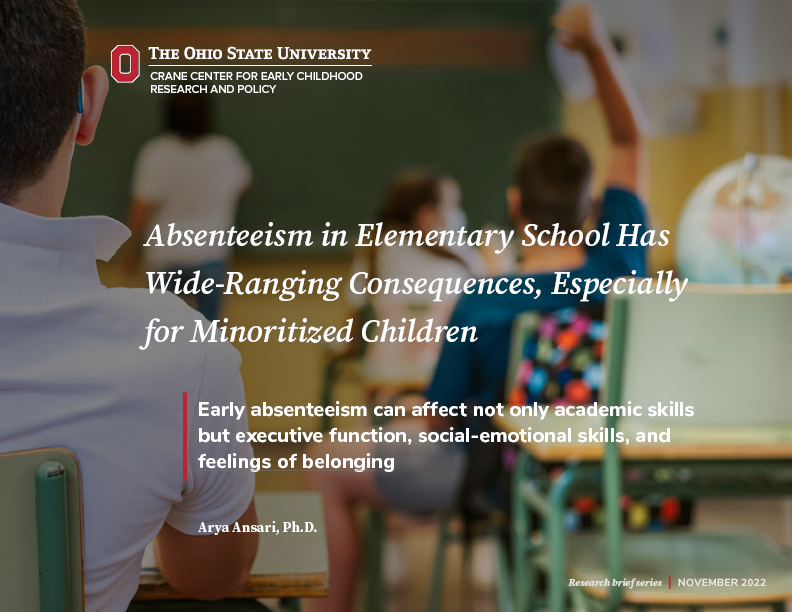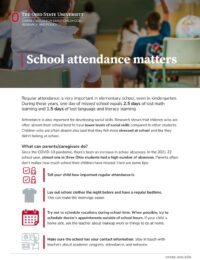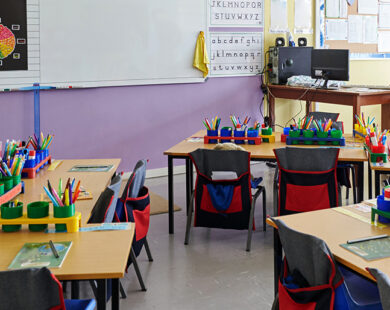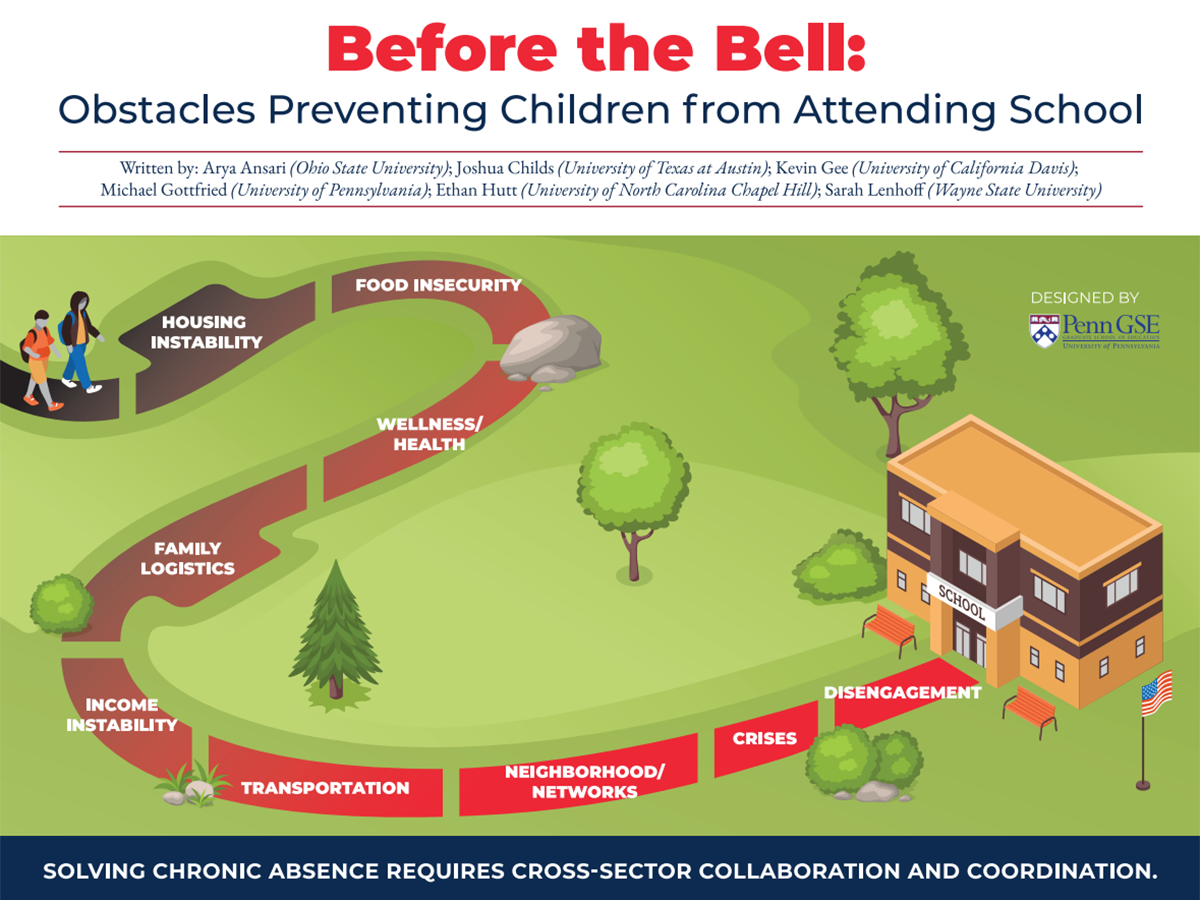Students cannot benefit from the resources and supports schools provide if those students do not show up. And in far too many schools, children are regularly missing class.
Chronic absenteeism is defined in Ohio as missing at least 10% of instructional time for any reason. In the 2023-24 school year, one out every four students in Ohio was chronically absent. The absenteeism rate was higher for certain groups, including students of color, students in households with low income, and students with disabilities. Urban districts also saw higher rates of absenteeism; in Ohio’s five largest enrollment districts, more than 40% of students were chronically absent.
Chronic absenteeism results in students having fewer opportunities to develop the academic and social-behavioral skills needed to allow for a successful future. Indeed, students who are chronically absent in high school have less than a 10% chance of graduating on time, which has many downstream economic impacts, including lower-status occupations, higher rates of unemployment, and lower earnings. Accordingly, solving the critical problem of poverty requires a focus on reducing chronic absenteeism. And reducing economic and social disparities requires that we intervene as early and as frequently as possible before small attendance problems become much bigger attendance problems.
Crane researchers have been examining the factors that prevent students from getting to school, and we offer resources to families, educators, and policymakers.
Chronic absenteeism means missing more than 10% of instructional time
More than 40% of students were chronically absent from some of Ohio’s largest school districts
CRANE RESOURCES ON CHRONIC ABSENTEEISM
A research brief on the consequences of missing school for elementary students.
A tip sheet for parents and caregivers on what they can do to help ensure their children attend school.
A one-pager with research insights for educators on how they can help make attendance a priority for students and their families.
A summary of research on the long-term consequences of school absenteeism.
Information on a current project in partnership with Columbus City Schools to reduce absenteeism.
A news story covering how Dr. Ansari was invited along with colleagues to share research and a new brief on chronic absenteeism at the White House.







